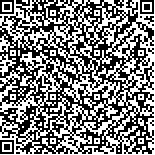海博涵,李辉,刘文洁,等.头部电针对膝骨性关节炎大鼠中枢性痛觉敏化的影响[J].中华物理医学与康复杂志,2025,47(7):585-594
扫码阅读全文

|
| 头部电针对膝骨性关节炎大鼠中枢性痛觉敏化的影响 |
|
| |
| DOI:10.3760/cma.j.cn421666-20240804-00632 |
| 中文关键词: 电针 中枢敏化 膝骨性关节炎 脑源性神经营养因子 大麻素受体 |
| 英文关键词: Electroacupuncture Central nervous system Nervous system sensitization Knee osteoarthritis Brain-derived neurotrophic factors Cannabinoid receptors |
| 基金项目:河南省医学科技攻关计划(联合共建)项目(LHGJ20190464) |
|
| 摘要点击次数: 1752 |
| 全文下载次数: 1708 |
| 中文摘要: |
| 目的 观察头部电针对膝骨性关节炎大鼠中枢性痛觉敏化的影响。 方法 选取8周龄雌性Sprague-Dawley(SD)大鼠32只,按随机数字表法将32只SD大鼠分为空白对照组、模型组、电针刺激组、假电针刺激组,每组8只大鼠。模型组、电针刺激组和假电针刺激组均于右侧膝关节注射碘乙酸钠(MIA)进行KOA造模。造模成功后第14至第28天,电针刺激组接受每日1次,每周6 d,连续2周的头部电针干预,假电针刺激组则接受相同疗程的假头部电针干预,空白对照组和模型组不接受电针干预。于造模前和造模成功后第3、7、14、21、28天,分别对4组大鼠进行双足平衡测痛测试和机械性痛敏测试。造模成功后第28天上述测试结束后,处死4组大鼠,采用蛋白免疫印记法和免疫组织化学法检测大鼠中脑导水管周围灰质(PAG)和脊髓后角(SDH)区域中脑源性神经营养因子(BDNF)、神经元受体酪氨酸激酶-2(TrkB)、1型大麻素受体(CB1R)的表达情况,同时采用酶联免疫吸附法测定其血清内P物质(SP)和5-羟色胺(5-HT)的含量。 结果 造模成功后第3天,模型组、假电针刺激组和电针刺激组大鼠的右后肢负重能力均显著低于空白对照组(P<0.05),并于造模后第14天降至最低水平;模型组、假电针刺激组和电针刺激组大鼠的疼痛反应均显著高于空白对照组(P<0.05),并于第14天达到峰值。造模成功后第28天(电针干预2周后),电针刺激组大鼠的右后肢负重能力和疼痛反应较模型组均明显改善(P<0.05)。造模成功后第28天,模型组大鼠PAG中BDNF和TrkB的蛋白含量较空白对照组均明显升高(P<0.05),电针刺激组大鼠BDNF和TrkB的蛋白表达量较模型组均明显降低(P<0.05),其CB1R的蛋白表达量较模型组则显著升高(P<0.05);模型组大鼠SDH中BDNF和TrkB的蛋白表达量均显著高于空白对照组(P<0.05),电针刺激组大鼠SDH中BDNF、TrkB和CB1R的蛋白表达量与模型组比较,差异均有统计学意义(P<0.05)。造模成功后第28天,电针刺激组大鼠PAG中BDNF和TrkB的阳性细胞表达量与模型组比较,均显著减少(P<0.05),其CB1R的阳性细胞表达量较模型组则显著增多(P<0.05);模型组大鼠SDH中的BDNF和TrkB的阳性细胞表达量较空白对照组均显著增加(P<0.05),电针刺激组大鼠SDH中的BDNF、TrkB和CB1R的阳性细胞表达量与空白对照组比较,差异均有统计学意义(P<0.05)。造模成功后第28天,模型组、假电针刺激组和电针刺激组血清中SP和5-HT的含量相较于空白对照组均显著升高,差异均有统计学意义(P<0.05),且电针刺激组血清中SP和5-HT的含量与模型组比较,差异均无统计学意义(P>0.05)。 结论 头部电针可显著改善膝骨性关节炎大鼠的中枢性痛觉敏化,其作用机制可能与头部电针可抑制大鼠PAG和SDH区域内BDNF和TrkB的表达,并激活CB1R的表达有关。 |
| 英文摘要: |
| Objective To explore the effect of scalp electroacupuncture (EA) on central pain sensitization in rats with knee osteoarthritis (KOA). Methods Thirty-two 8-week-old female Sprague-Dawley rats were randomly divided into a blank control group, a model group, an electroacupuncture (EA) group and a sham EA group, each of 8. All of the rats except those in the control group had KOA induced through intra-articular monosodium iodoacetate injections in the right knee. Two weeks later the EA group rats began receiving daily head EA sessions 6 days/week for 2 weeks. The sham EA group received identical but non-therapeutic stimulation. The blank control and model groups received no EA intervention. Before the modelling and 3, 7, 14, 21 and 28 days later, all of the rats completed bipedal balance pain tests and mechanical allodynia evaluations. After the testing on day 28, all of the rats were euthanized for molecular analyses. Western blotting and immunohistochemistry were performed to examine protein expression of brain-derived neurotrophic factor (BDNF), tropomyosin receptor kinase B (TrkB), and cannabinoid receptor type 1 (CB1R) in both the periaqueductal gray (PAG) matter and spinal dorsal horns (SDHs). Serum levels of substance P (SP) and 5-hydroxytryptamine (5-HT) were also quantified using enzyme-linked immunosorbent assays. Results Three days after successful modeling, the average weight-bearing capacity of the right hind limb in the model, sham EA and EA groups was significantly lower than that of the blank controls. It reached its lowest level on the 14th day after modeling. Concurrently, the pain responses in those three groups were significantly higher than among the controls, also peaking on the 14th day after modeling. After two weeks of electroacupuncture, the electroacupuncture group showed significant improvement in both right hind limb weight-bearing capacity and pain response compared to the model group. Meanwhile, the levels of BDNF and TrkB protein in the periaqueductal gray matter were significantly higher in the model group than among the blank controls, while the electroacupuncture group exhibited significantly reduced expression of BDNF and TrkB proteins compared to the model group, along with significantly increased CB1R protein expression. The model group showed significantly elevated expression of both BDNF and TrkB proteins in the spinal dorsal horn compared to the blank control group, while there were significant differences between the EA and model groups in the expression of BDNF, TrkB and CB1R proteins. Immunohistochemical analysis on day 28 revealed that the EA group had significantly fewer BDNF- and TrkB-positive cells in the PAG compared to the model group, with significantly more CB1R-positive cells. In the SDH, the model group exhibited significantly increased numbers of BDNF- and TrkB-positive cells compared to the blank control group, whereas significant differences were found between the EA and blank control groups in the numbers of BDNF-, TrkB- and CB1R-positive cells. Serum analysis on day 28 demonstrated that substance P and 5-hydroxytryptamine levels in the model, sham EA and EA groups were significantly higher than in the blank control group, on average. However, no significant differences were observed in serum SP and 5-HT levels between the EA and model groups. Conclusions Scalp EA significantly alleviates central pain sensitization in KOA, at least in rats, potentially by suppressing BDNF and TrkB expression while upregulating CB1R expression in the PAG matter and the SDH. |
|
查看全文
查看/发表评论 下载PDF阅读器 |
| 关闭 |
|
|
|